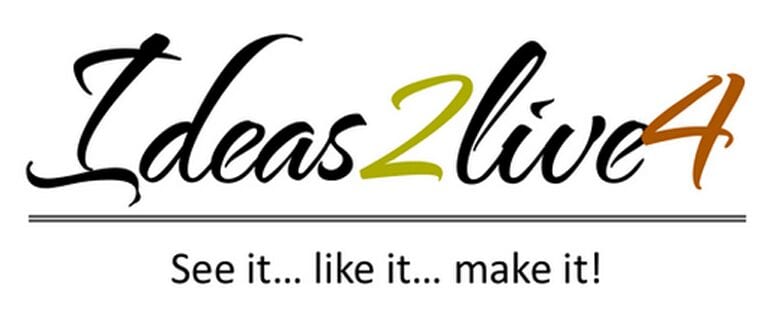Every time we run a post showing a new use for pallets, we get lots of comments about pallets not being safe to use. Never has an industry suffered from so many myths. Yes, there are pallets treated with methyl bromide, but in most countries, these are now hard to find. Many are now asking how to tell if pallet wood is treated or not.
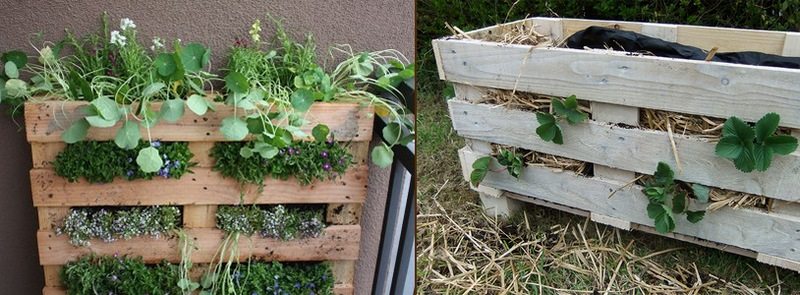
Specifically, pallets treated with methyl bromide are banned in Australia, New Zealand, Europe and Canada (and probably many other countries). Methyl bromide is banned because it is a dangerous chemical – dangerous to both people and the environment. Work health and safety regulations in the above countries preclude the handling of pallets treated with this poison. Instead, pallets are either heat treated, or untreated.
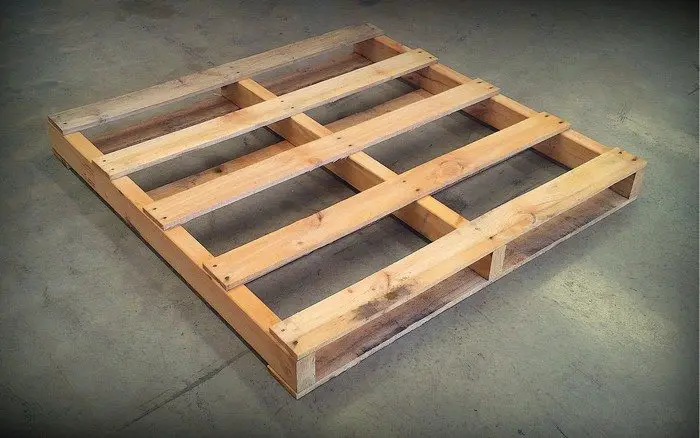
So let’s start with a basic premise… every pallet is safe to use BUT it depends on what you intend to use it for! Various pyrethrins and the fungicide, propiconazole are common treatments for timber pallets. It’s also possible that harmful materials or chemicals may have been spilled on the pallet timber and been absorbed by it during use. Is that bad? Well, not if you intend to use the pallet as a fence and grow flowers in it. Vegetables, on the other hand, may be a concern.
[adinserter block=”11″]
Contents
How to Tell if Pallet Wood is Treated
If the pallet has been made for export, it will be heat treated in almost all cases. Heat treatment (56°C for softwood and 60°C for hardwood) effectively kills any pests that may have taken up residence in the timber. Note again that there is always the possibility that something toxic has been spilt on a pallet. For this reason, it makes sense to know what the pallet has carried or, at least, where the pallet has come from.
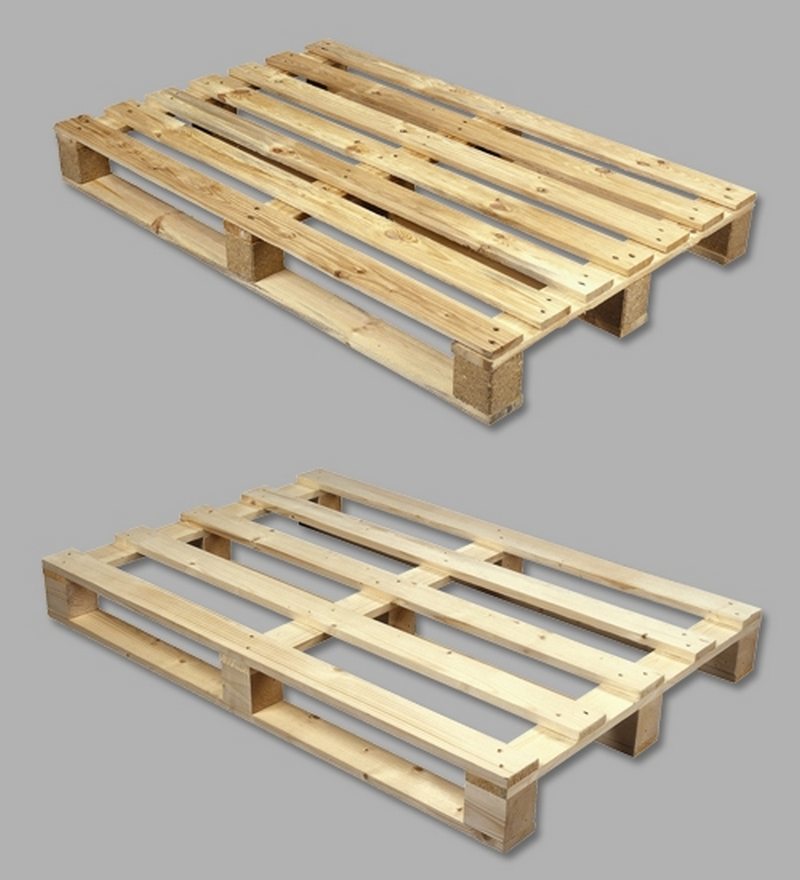
There are two types of pallets: one-time and multiple-use. One-time-use pallets are typically made of cheap softwood, while multiple-use pallets are usually made from hardwood or, increasingly, from plastics and composites. Furniture, white goods, and board manufacturers use examples of one-time-use pallets. Examples of multiple use pallets are of those used by brick or paver manufacturers and heavy industry. These pallets are easy to recognize as they have colored edges. They are also usually branded as being the property of the “XYZ Ltd”.
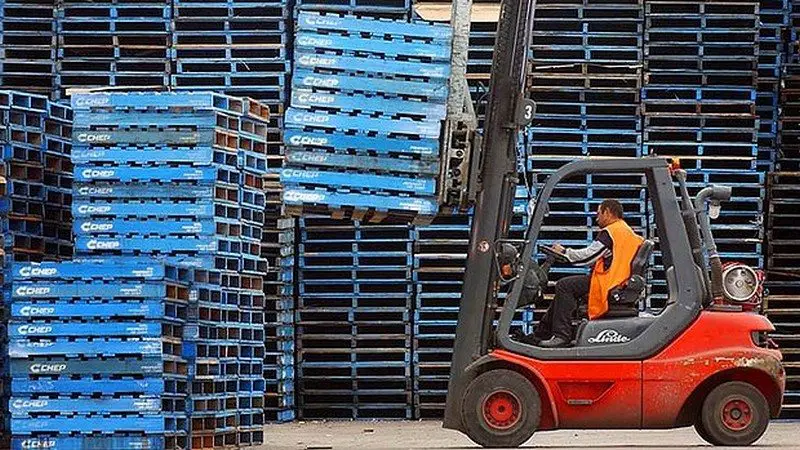
How do I know my pallet has not been treated with methyl bromide?
There are 500 million pallets made in the USA alone each year! How many would China make? Or Europe? Obviously, some of these pallets will not be safe to use – perhaps many. But that leaves vast numbers that are safe to use in your projects. So, how do you tell the difference? If you haven’t realized it yet, I will share a secret with you… we live in a global economy.
This means that any company or business wishing to transact internationally needs to comply with international standards. One of those standards is established by the International Plant Protection Commission. The IPPC has been established to help prevent the spread of insects, fungus, and mold between countries and, especially, continents. Pallets used for international trade must bear IPPC certification that will contain information as shown here:
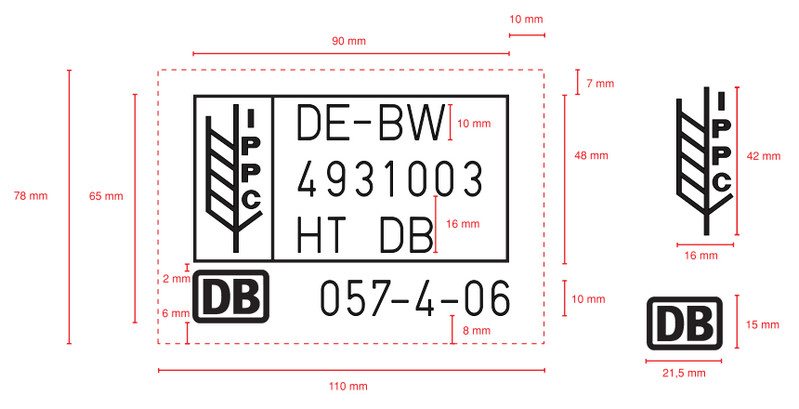
This symbol will include:
- A two-letter ISO country code. For instance, AU for Australia or US for the United States.
- The 000 portion of the symbol represents the unique certification number issued to the treatment provider or wood packaging manufacturer. This certification number ensures that the wood packaging material can be traced back to the treatment provider or manufacturer.
- YY is the treatment abbreviation.
- HT is the code for heat treatment to a minimum of 56 degrees Celsius for 30 minutes.
- MB is the code for methyl bromide fumigation.
What you are interested in is the two letters at the bottom right of the IPPC logo – in this example currently showing HT for Heat Treated. If the letters are MB, it means that pallet has been treated with methyl bromide. Leave it where it is. Assuming the letters are HT, you are good to go!
What if there are no markings on the pallet?
In this case, it means that the pallet has been manufactured for domestic use only. Accordingly, it does not need to be treated – by either heat or chemicals. These pallets are made from the cheapest possible timbers as they are designed to be discarded with the packaging of whatever was sitting on it. This means that you can use unmarked pallets with a high level of confidence.
I hope that this has helped to clear the air and dispel some of the myths surrounding the re-purposing of pallets. I repeat that I am not an expert on pallets. However, as someone keen to recycle and re-purpose wherever possible, I have taken the time to research and read available materials on pallet construction and treatment. I recommend that you reassure yourself by doing some research to determine what may or may not be safe in your locale.
How to dismantle a pallet
Let’s face it, pallets are not meant to come apart. They are manufactured with galvanised nails that have serrations to bind to the wood. Nonetheless, pallets can be dismantled if reasonable care is taken. Because pallets are made from very inexpensive (read cheap) timber, you are guaranteed to get splinters handling pallets if you do not wear gloves. The following instructions are courtesy of the Canadian Pallet and Container Association.
How to > disassemblyofpallets
It seems that there are as many ideas for re-purposing pallets as there are people on the face of the earth. We would love to see your project when it’s finished. Even better, take lots of photographs and write a guest blog for us.
Common Chemicals Used on Pallet Wood and Their Risks
Chemicals are used to treat some to guard against mold, rotting, and bugs. Although shipping and storage call for these treatments, they can endanger health and the environment. Knowing the most often used chemicals on pallet wood will enable you decide whether a pallet is suitable for your project.
Methyl Bromide (MB) – A Banned but Dangerous Fumigant
Once often used to fumigate pallets, methyl bromide kills fungus and insects. But it is quite harmful to people and the environment, hence several nations, including the United States, Canada, Australia, and the European Union, have banned it. In severe circumstances, this chemical can cause nerve damage; otherwise, it might cause headaches, dizziness, coughing, and respiratory problems. A pallet bearing the “MB” mark should not be utilized, particularly for interior tasks or anything coming into touch with food.
Pyrethrins – A Common Insecticide with Potential Risks
Natural derived pesticides used to stop bug infestations in pallet wood are pyrethrins. Although they are regarded as less dangerous than many synthetic pesticides, extended contact can lead to allergic reactions, respiratory trouble, and skin sensitivity. Sanding or cutting the wood from a pallet treated with pyrethrins can release these chemicals into the air and endanger anyone touching it.
Propiconazole – A Fungicide That Protects but Persists
On wooden pallets, propiconazole is a fungicide meant to stop mold and fungal development. Commonly utilized for outdoor purposes, pressure-treated wood often contains it. Although good in avoiding decay, inhaling or absorbing it through the skin could be dangerous. Long-term usage of this substance has been linked, according to studies, to liver damage and disturbance of hormone levels. Steer clear of utilizing a pallet for indoor furniture, garden beds, or anything that involves direct skin contact if you believe it has been treated with a fungide.
Creosote – A Hazardous Preservative
Though not often utilized in current pallet treatment, creosote-treated wood can still be found, especially in older pallets or railway ties used for pallets. Classed as a carcinogen, creosote is a tar-based preservative that guards wood from rot and bugs. Long-term health impacts, breathing issues, and skin burns can all result from coming into touch with creosote-treated wood. These pallets should never be burned or used in confined areas.
Chlorophenols – A Toxic Legacy
Historically, wood against fungus and insects was treated with chlorine compounds such as pentachlorophenol (PCP). Although their toxicity mainly caused them to be phased out, some older pallets can still contain these substances. Skin irritation, respiratory problems, and, in severe cases, harm to the neurological system and internal organs can all result from exposure. Any pallet of unknown origin should be avoided if it seems extensively processed since these compounds do not readily break down.
Search for IPPC marks and steer clear of unmarked or dubious pallets to help you avoid dangerous chemicals. Because they lack chemical treatments, heat-treated (HT) pallets are the safest choice. Should you have to use a treated pallet, carefully clean and seal the wood to lower possible hazards. Choose dependable pallets from reputable vendors when in doubt to guarantee your do-it-yourself project is both environmentally friendly and safe.
Pallets Gallery
Click on any image to start lightbox display. Use your Esc key to close the lightbox.![]()
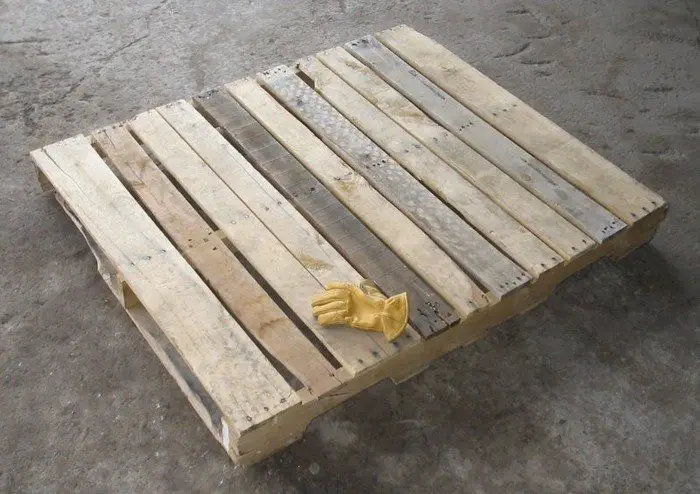

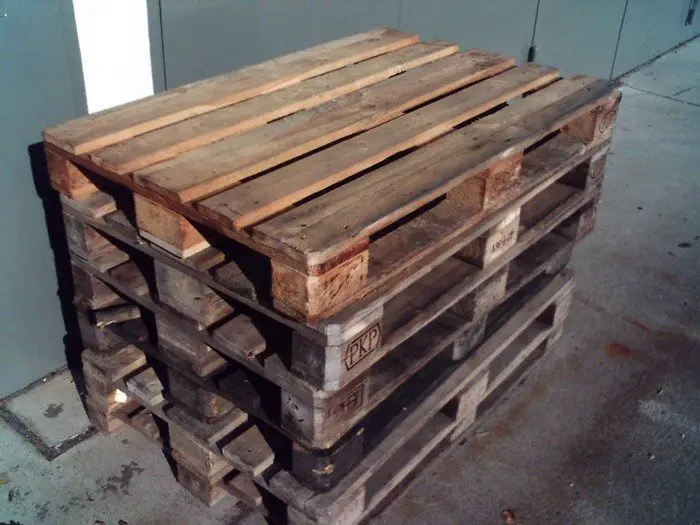
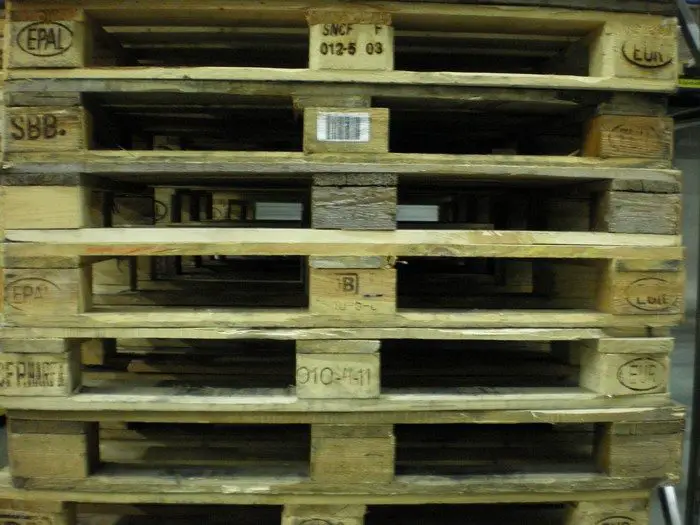
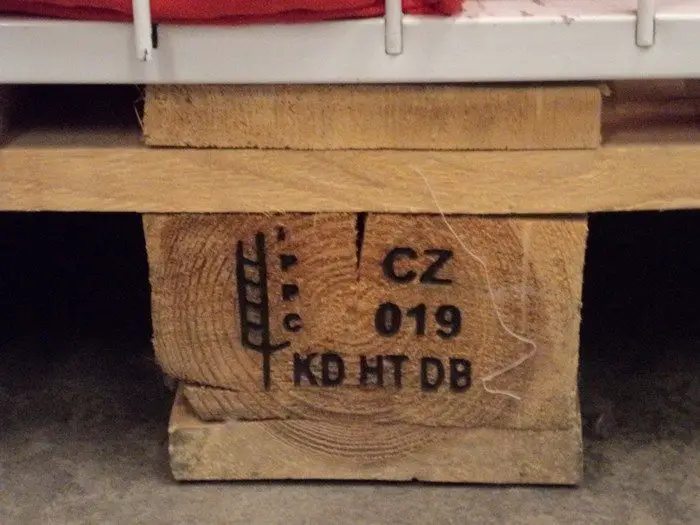

Best Uses for Untreated vs. Treated Pallets
Pallet wood is a great resource for DIY projects, but not all pallets are the same. Some are treated with chemicals to protect against pests and decay, while others are left untreated. Understanding the difference is crucial for choosing the right pallet for your project. Before using any pallet, checking whether the wood has been treated is essential. You can do this by looking for the IPPC (International Plant Protection Convention) stamp, which indicates the type of treatment used.
Safe and Versatile: Uses for Untreated Pallets
Untreated pallets, also known as raw or natural pallets, are the safest option for projects where direct contact with people, animals, or plants is involved. These pallets have not been exposed to chemical treatments, making them ideal for:
- Furniture and Home Décor – Coffee tables, bookshelves, bed frames, and wall paneling can all be made from untreated pallets. Their natural look and texture make them perfect for rustic or farmhouse-style designs.
- Children’s Play Areas and Toys – Because untreated pallets don’t contain harmful chemicals, they can be safely used to create playhouses, sandboxes, or even DIY wooden toys.
- Garden Beds and Compost Bins – Since untreated wood doesn’t leach chemicals into the soil, it’s a great choice for raised garden beds, compost bins, and planters where food crops will grow.
- Pet Structures – Dog houses, chicken coops, and rabbit hutches should be built with untreated pallets to ensure that animals aren’t exposed to toxic substances.
To confirm that your pallet is untreated, check for the absence of an IPPC stamp or look for the “HT” (heat-treated) marking, which means the pallet has been treated using high temperatures instead of chemicals.
Durable and Weather-Resistant: Uses for Treated Pallets
Treated pallets are designed to withstand harsh conditions, making them more resistant to rot, insects, and moisture. However, they may contain chemicals that make them unsuitable for indoor or food-related projects. Treated pallets work best for:
- Outdoor Furniture and Decking – Benches, patio furniture, and even small decks can benefit from the durability of treated pallets. Their resistance to moisture and pests helps them last longer in outdoor environments.
- Fencing and Landscaping Features – Treated pallets can be used to create fences, garden dividers, and retaining walls, where durability matters more than direct human contact.
- Storage and Workbenches – If you need sturdy wood for garage shelves, tool organizers, or workbenches, treated pallets can handle heavy loads and harsh conditions.
Before using treated pallets, check the IPPC stamp for the letters “MB” (methyl bromide), which indicates chemical fumigation. If a pallet has this marking, it should be avoided. The safest treated pallets will have “HT” instead, meaning they were heat-treated without chemicals.
How to Tell If Pallet Wood Is Treated
If you’re unsure whether a pallet is safe for your project, follow these three steps:
- Look for the IPPC Stamp – This will tell you whether the pallet has been heat-treated (HT) or chemically treated (MB). Always avoid pallets with MB markings.
- Check for Unusual Odors or Residues – Chemically treated pallets may have a strong chemical smell or show signs of staining, which could indicate exposure to hazardous substances.
- Know the Source – Pallets used in international shipping or industrial settings are more likely to be treated. If you’re getting pallets from a grocery store, furniture shop, or local warehouse, they are more likely untreated and safe for DIY use.
By choosing the right type of pallet for your project and ensuring it is safe to use, you can create beautiful and functional pieces while avoiding unnecessary health risks. Constantly scrutinize pallets before repurposing them, and when in doubt, choose untreated or heat-treated wood for maximum safety.
Conclusion
Selecting appropriate materials for your project depends on knowing if pallet wood is treated. Always seek for the IPPC stamp, search for marks like “HT” for heat-treated pallets, and steer clear of pallets marked “MB,” which include dangerous chemicals. For the best use, use treated or heat-treated pallets for your DIY pallet projects. When in doubt, check the wood for odd smells, stains, or indicators of chemical exposure.
If you have any questions or suggestions, just use the comment option below. Thanks for joining us.
The OBN Team
